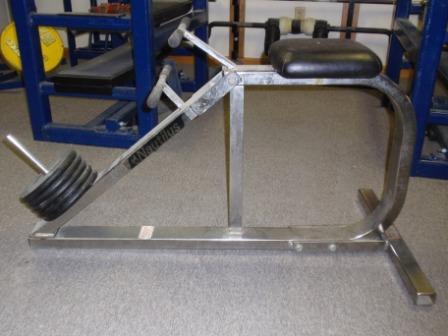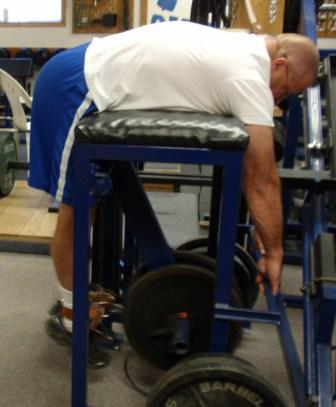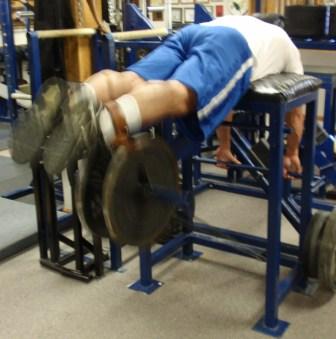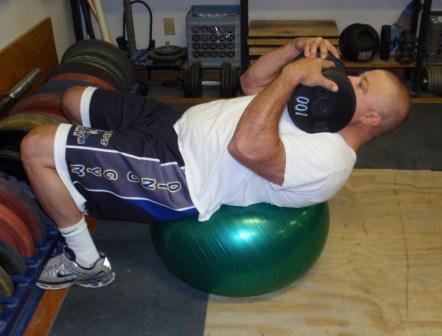To Be Young and Strong!
by Al Myers
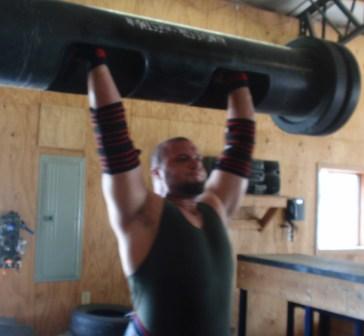
Colby Duranleau, of the Dino Gym, shown training the log last weekend in the gym. Colby is 19 years old, and at 6'6", 320 pounds bodyweight has a bright strength future ahead of him. His current training personal best with the log is 315 pounds.
It is always exciting to me when some new, young lifter joins the gym that shows great promise. A few months ago Colby Duranleau started training at the Dino Gym and has made unbelievable progress in his training since then. Those of us that have been around the iron game for quite a while (I hate to admit it – but that includes ME!) have the responsibility to help guide the “next generation” into the sport. I think of those that helped me get started many years ago. If it wasn’t for their guidance and encouragement, I might not have stayed after training and competing.
This is so true with our organization, the USAWA. The other “veterans”, like myself, need to take the time to teach new, younger lifters how to do the All-Round Lifts. We aren’t going to be around forever, and the younger lifters are the future of our sport. Just look at our USAWA President Denny Habecker and his protege Kohl Hess as an example. Kohl is “only 16” and already has great proficiency in the technique of many of the all-round lifts, due to the instruction given by Denny. I was so impressed with Frank Ciavattone at the USAWA Nationals, where he and his son Frankie both participated. It is obvious that Frank is doing his part in “passing down the tradition” to his son, who someday I predict will be one of the best lifters in the USAWA, the same as Frank has been for many years. The USAWA will grow if each one of us takes the time to teach and mentor just one new lifter in the sport of all-round weightlifting.
